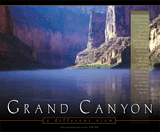The Grand Canyon in Miniature
A canyon hundreds of yards long cuts through a 25-acre field belonging to Houghall College in England.
A canyon hundreds of yards long cuts through a 25-acre field belonging to Houghall College in England. The big gully may look like it’s been there for centuries, but really the field was flat and smooth just a few weeks ago.
Actually, the canyon is the work of perhaps just “a few minutes [or] a couple of hours” of rapid erosion, Durham University geomorphologist (a scientist who studies the origin and development of land forms) Jeff Warburton told the Daily Mail. Of course, at 14 feet deep and more than 80 feet at its widest, the ravine is a far cry from the Grand Canyon. Nonetheless, it’s a testimony to the power of water.
The erosion began when Durham, England, received three inches of rain in a single day, setting the stage for the runoff that dug out the canyon. Houghall College’s Pete Whitfield discovered the canyon in time to see some of the watery action. “I heard this rushing like Niagara Falls, and I could see this water wearing away the land.” Whitfield added, “It’s an amazing phenomenon, but I estimate it’s the result of water from up to 120 acres of flooded land.”
Daily Mail reporter Neil Sears concludes, “It is an extraordinary illustration of the power of nature—and shows that enough water, flowing with enough force, doesn’t need decades to carve a path through the earth.” Whether intentional or not, his comment—and the making of the Grand Canyon of Durham—is evidence for the believability of the worldwide Flood carving out many of the world’s geological features. If 120 acres of runoff from a day of rain dug a 14-foot-deep gorge in the earth, what would happen when enough water to cover the surface of the earth from 150 days of water from above and below (the “fountains of the great deep” and the “windows of heaven”) retreated (even if through solid rock, rather than soil)? And by the way, wouldn’t it be fun to be able to tell someone you were a “geomorphologist”?
Recommended Resources
- © 2024 Answers in Genesis
- Privacy Policy
- Contact
- About


